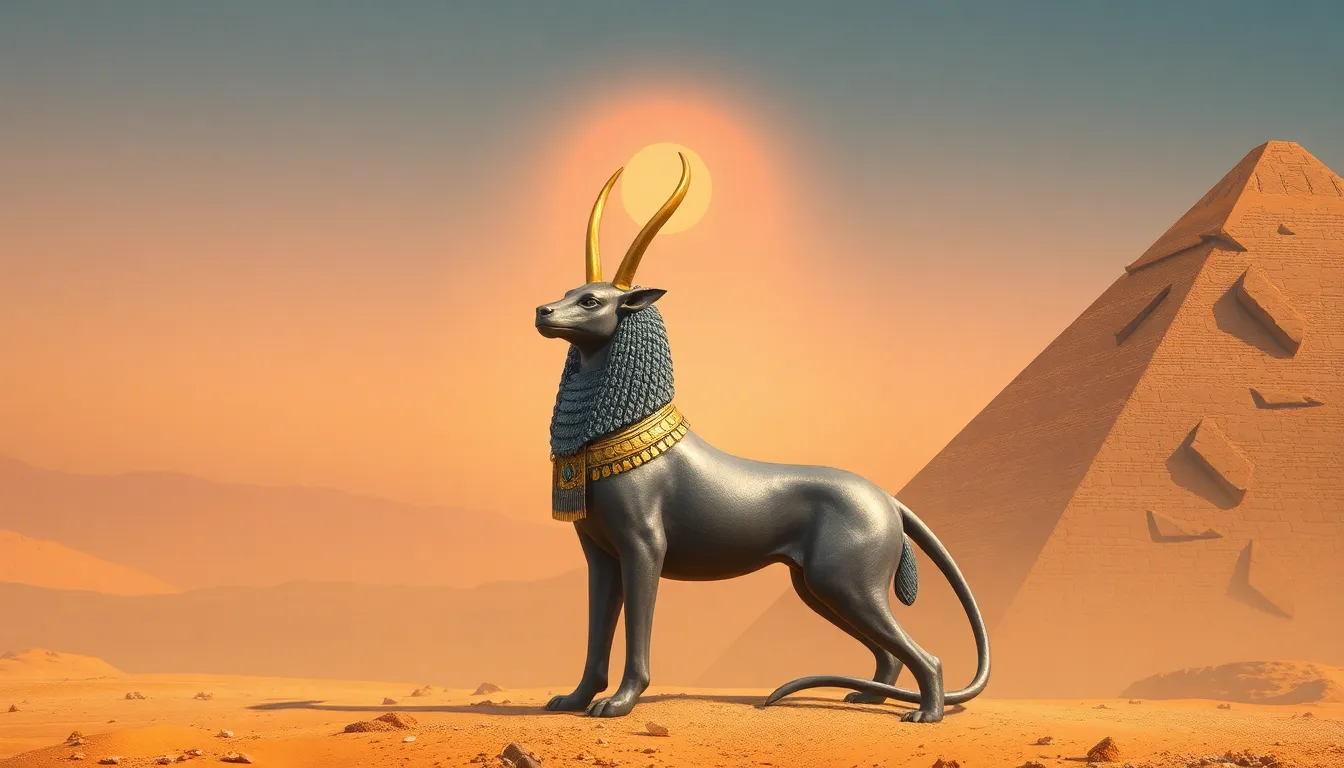The Importance of Sacred Animals in Egyptian Beliefs
I. Introduction
Ancient Egyptian religion and culture were rich and complex, characterized by a deep reverence for the natural world, particularly animals. Animals were not only seen as part of the environment but were also imbued with spiritual significance, often serving as symbols of various deities and concepts. This article explores the multifaceted role of sacred animals in Egyptian beliefs, their cultural significance, and their lasting legacy in both ancient and modern contexts.
II. The Role of Animals in Egyptian Mythology
In Egyptian mythology, animals played a central role in the pantheon of gods and their stories. Many key deities were associated with specific animals, which symbolized their powers and attributes.
A. Overview of key deities and their animal associations
- Bastet: The lioness goddess of home, fertility, and domesticity.
- Sobek: The crocodile god associated with the Nile and military prowess.
- Horus: Often depicted as a falcon or with a falcon head, representing kingship and the sky.
- Apis: A sacred bull symbolizing strength and fertility.
B. Myths involving sacred animals
Numerous myths illustrate the importance of these animals in Egyptian spirituality. For instance, the story of Bastet reflects her role as a protector of the home and the family, while Sobek’s tales highlight the duality of creation and destruction.
C. Symbolism of animals in creation stories
Animals often represented various elements of creation myths, embodying the forces of chaos and order. For example, the primordial waters of Nun were often associated with crocodiles, symbolizing the potential for life and the dangers of the unknown.
III. Major Sacred Animals and Their Significance
Several animals held particular significance in ancient Egyptian culture, often associated with specific deities and attributes that reflected their importance in daily life.
A. Cats (Bastet)
Cats were revered in ancient Egypt, primarily due to their association with the goddess Bastet.
- Protection and fertility: Cats were believed to protect homes from vermin and evil spirits, embodying fertility and nurturing.
- Role in daily life and household: They were kept as pets and were essential in households, symbolizing domestic harmony.
B. Crocodiles (Sobek)
The crocodile, represented by Sobek, was a powerful symbol in Egyptian mythology.
- Fertility and military prowess: Sobek was associated with the Nile’s fertility and was honored for protecting Egypt in times of war.
- Representation in art and architecture: Many temples included crocodile imagery, showcasing their divine connection.
C. Bulls (Horus and Apis)
Bulls were symbols of power and kingship, especially through the deities Horus and Apis.
- Power and kingship: The bull represented strength and was often linked to the pharaohs, embodying their divine right to rule.
- Worship practices and rituals: Apis was worshiped through elaborate rituals, including a special burial process for the deceased bulls, who were believed to be incarnations of the god.
IV. The Cultural Impact of Sacred Animals
The influence of sacred animals extends beyond mythology into the realms of art, literature, and daily life in ancient Egypt.
A. Animal symbolism in art and iconography
Animals were prominently featured in Egyptian art, often depicted in paintings, sculptures, and jewelry, serving as symbols of the divine and natural order.
B. Influence on literature and poetry
Literary works often referenced sacred animals, using them as metaphors for human traits and moral lessons, reflecting their esteemed status in society.
C. Representation in tombs and burial practices
Many tombs featured depictions of sacred animals, believed to assist the deceased in the afterlife. Mummified animals, especially cats and bulls, were often buried with their owners, signifying their importance in both life and death.
V. Rituals and Worship Involving Sacred Animals
Rituals surrounding sacred animals were integral to Egyptian worship and cultural practices.
A. Festivals and celebrations honoring animals
Various festivals celebrated sacred animals, such as the Feast of Bastet, where people honored the cat goddess with music, dance, and offerings.
B. The role of priests and priestesses
Specialized priests and priestesses oversaw the care and worship of sacred animals, performing rituals that connected the divine with the earthly realm.
C. Animal mummification and its significance
Mummification of sacred animals was a common practice, believed to ensure their safe passage to the afterlife and their continued presence in the spiritual world.
VI. The Relationship Between Humans and Sacred Animals
The relationship between Egyptians and sacred animals was marked by respect and reverence.
A. Domestic vs. wild animals in Egyptian society
While domestic animals like cats were cherished, wild animals were often seen as both symbols of power and entities to be respected and feared.
B. Protection and care of sacred animals
Sacred animals were protected by law, reflecting their significant status. Harming them was considered a grave offense, often punishable by death.
C. Legal and social implications of harming sacred animals
The protection of sacred animals reinforced their importance in society, ensuring that they were treated with the utmost care and respect.
VII. The Decline of Sacred Animal Worship
Over time, the worship of sacred animals declined due to various historical influences.
A. Historical events leading to changes in beliefs
As Egypt faced invasions and cultural shifts, traditional beliefs began to wane, leading to a decline in the worship of sacred animals.
B. The impact of foreign invasions and cultural exchange
Interactions with foreign cultures introduced new beliefs and practices, which diluted traditional Egyptian reverence for sacred animals.
C. Modern perspectives on sacred animals in Egypt
Today, while the worship of sacred animals has largely faded, their legacy persists in cultural symbols and the appreciation of wildlife, echoing the ancient reverence for these creatures.
VIII. Conclusion
The importance of sacred animals in Egyptian beliefs underscores a profound connection between the natural world and spirituality. These animals were not merely subjects of worship; they were integral to the identity and culture of ancient Egypt. Their legacy continues to resonate in contemporary culture, reminding us of the enduring role of animals in spirituality and human experience.




